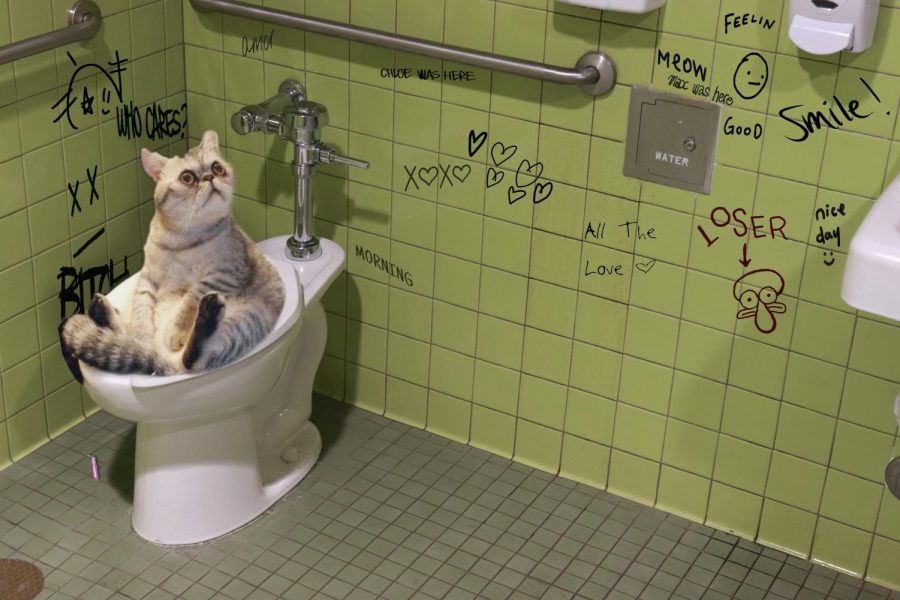Reasons You Must Never Flush Cat Poop Down Your Toilet - Critical Information
Reasons You Must Never Flush Cat Poop Down Your Toilet - Critical Information
Blog Article
Are you interested in ideas on Don’t flush cat feces down the toilet?

Introduction
As pet cat proprietors, it's necessary to be mindful of just how we throw away our feline pals' waste. While it might appear convenient to purge cat poop down the commode, this practice can have harmful repercussions for both the setting and human health and wellness.
Environmental Impact
Purging cat poop presents dangerous virus and parasites into the water system, posturing a significant risk to marine ecological communities. These pollutants can negatively influence marine life and compromise water top quality.
Health Risks
Along with environmental problems, flushing pet cat waste can also posture health threats to humans. Feline feces might include Toxoplasma gondii, a bloodsucker that can cause toxoplasmosis-- a potentially serious ailment, particularly for expecting females and individuals with weakened immune systems.
Alternatives to Flushing
The good news is, there are more secure and more accountable methods to dispose of pet cat poop. Take into consideration the complying with alternatives:
1. Scoop and Dispose in Trash
One of the most typical method of disposing of pet cat poop is to scoop it into an eco-friendly bag and throw it in the trash. Make sure to use a specialized litter inside story and deal with the waste without delay.
2. Use Biodegradable Litter
Go with biodegradable feline litter made from materials such as corn or wheat. These clutters are environmentally friendly and can be safely taken care of in the trash.
3. Bury in the Yard
If you have a lawn, take into consideration burying feline waste in an assigned location far from vegetable gardens and water sources. Make sure to dig deep sufficient to stop contamination of groundwater.
4. Mount a Pet Waste Disposal System
Invest in an animal waste disposal system specifically developed for feline waste. These systems make use of enzymes to break down the waste, lowering odor and ecological effect.
Verdict
Responsible family pet possession expands past providing food and shelter-- it also includes appropriate waste administration. By avoiding purging feline poop down the bathroom and selecting alternate disposal techniques, we can lessen our environmental footprint and safeguard human health.
Why Can’t I Flush Cat Poop?
It Spreads a Parasite
Cats are frequently infected with a parasite called toxoplasma gondii. The parasite causes an infection called toxoplasmosis. It is usually harmless to cats. The parasite only uses cat poop as a host for its eggs. Otherwise, the cat’s immune system usually keeps the infection at low enough levels to maintain its own health. But it does not stop the develop of eggs. These eggs are tiny and surprisingly tough. They may survive for a year before they begin to grow. But that’s the problem.
Our wastewater system is not designed to deal with toxoplasmosis eggs. Instead, most eggs will flush from your toilet into sewers and wastewater management plants. After the sewage is treated for many other harmful things in it, it is typically released into local rivers, lakes, or oceans. Here, the toxoplasmosis eggs can find new hosts, including starfish, crabs, otters, and many other wildlife. For many, this is a significant risk to their health. Toxoplasmosis can also end up infecting water sources that are important for agriculture, which means our deer, pigs, and sheep can get infected too.
Is There Risk to Humans?
There can be a risk to human life from flushing cat poop down the toilet. If you do so, the parasites from your cat’s poop can end up in shellfish, game animals, or livestock. If this meat is then served raw or undercooked, the people who eat it can get sick.
In fact, according to the CDC, 40 million people in the United States are infected with toxoplasma gondii. They get it from exposure to infected seafood, or from some kind of cat poop contamination, like drinking from a stream that is contaminated or touching anything that has come into contact with cat poop. That includes just cleaning a cat litter box.
Most people who get infected with these parasites will not develop any symptoms. However, for pregnant women or for those with compromised immune systems, the parasite can cause severe health problems.
How to Handle Cat Poop
The best way to handle cat poop is actually to clean the box more often. The eggs that the parasite sheds will not become active until one to five days after the cat poops. That means that if you clean daily, you’re much less likely to come into direct contact with infectious eggs.
That said, always dispose of cat poop in the garbage and not down the toilet. Wash your hands before and after you clean the litter box, and bring the bag of poop right outside to your garbage bins.
https://trenchlesssolutionsusa.com/why-cant-i-flush-cat-poop/

I was brought to that article about How to Dispose of Cat Poop and Litter Without Plastic Bags through a good friend on a different web address. Do you know somebody who is in the market for the subject? Do not hesitate to promote it. I value reading our article about How to Dispose of Cat Poop and Litter Without Plastic Bags.
Click Here Report this page